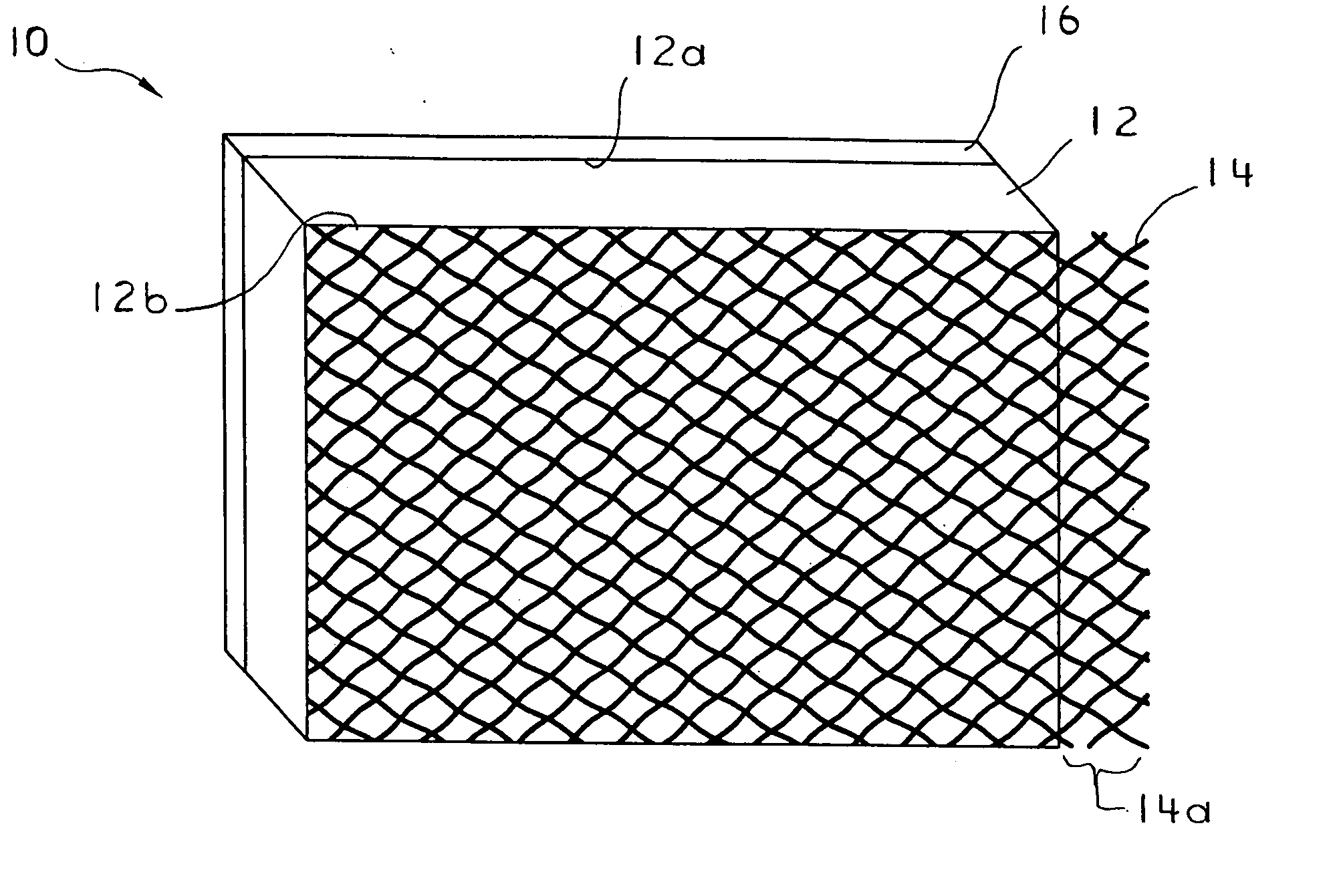Adhesive attachment and removal device
a technology of adhesive attachment and removal device, which is applied in the field of adhesive dressings, can solve the problems of reducing the likelihood of patient's hair being embedded, and achieve the effect of increasing patient comfor
- Summary
- Abstract
- Description
- Claims
- Application Information
AI Technical Summary
Benefits of technology
Problems solved by technology
Method used
Image
Examples
Embodiment Construction
[0020] For the purposes of promoting an understanding of the principles of the invention, reference will now be made to the embodiments illustrated in the drawings and described in the following written specification. It is understood that no limitation to the scope of the invention is thereby intended. It is further understood that the present invention includes any alterations and modifications to the illustrated embodiments and includes further applications of the principles of the invention as would normally occur to one skilled in the art to which this invention pertains.
[0021] In one embodiment of the invention, a laminate 10 comprises an absorptive adhesive layer 12 and a removal layer 14, as illustrated in FIG. 1. In some constructions, a backing layer 16 made of film, foam or combined layers of such flexible materials may be present on the surface 12a of the adhesive layer. In addition, a removable release liner 18 may cover the surface 12b of the adhesive layer opposite t...
PUM
 Login to View More
Login to View More Abstract
Description
Claims
Application Information
 Login to View More
Login to View More - R&D
- Intellectual Property
- Life Sciences
- Materials
- Tech Scout
- Unparalleled Data Quality
- Higher Quality Content
- 60% Fewer Hallucinations
Browse by: Latest US Patents, China's latest patents, Technical Efficacy Thesaurus, Application Domain, Technology Topic, Popular Technical Reports.
© 2025 PatSnap. All rights reserved.Legal|Privacy policy|Modern Slavery Act Transparency Statement|Sitemap|About US| Contact US: help@patsnap.com


